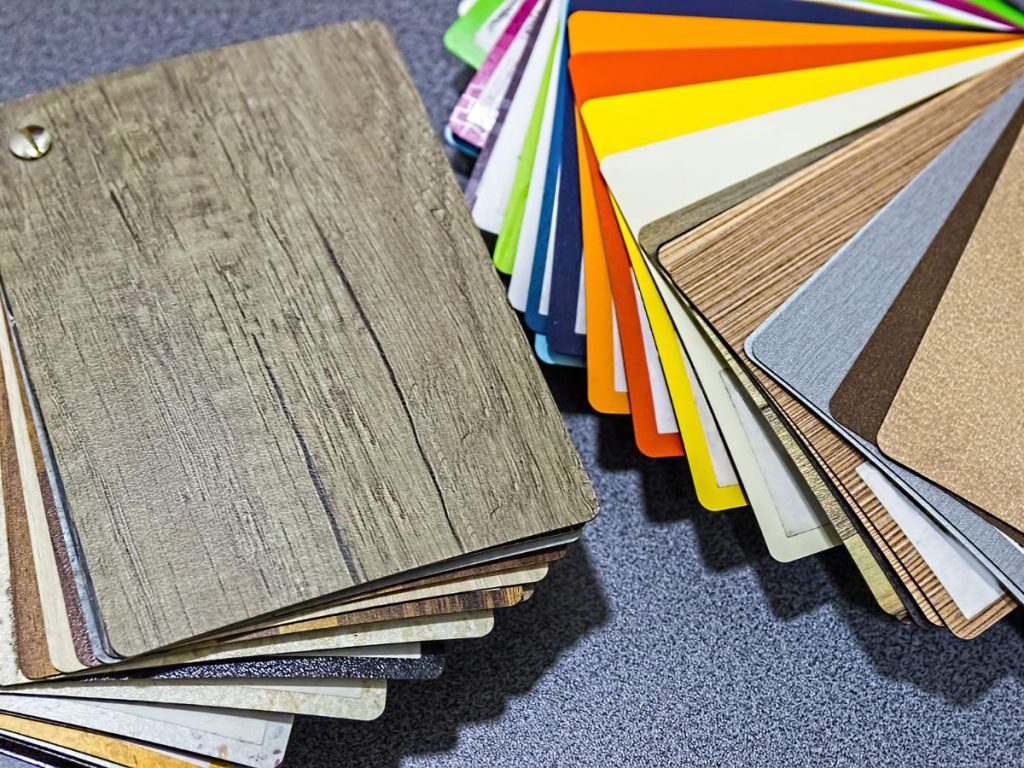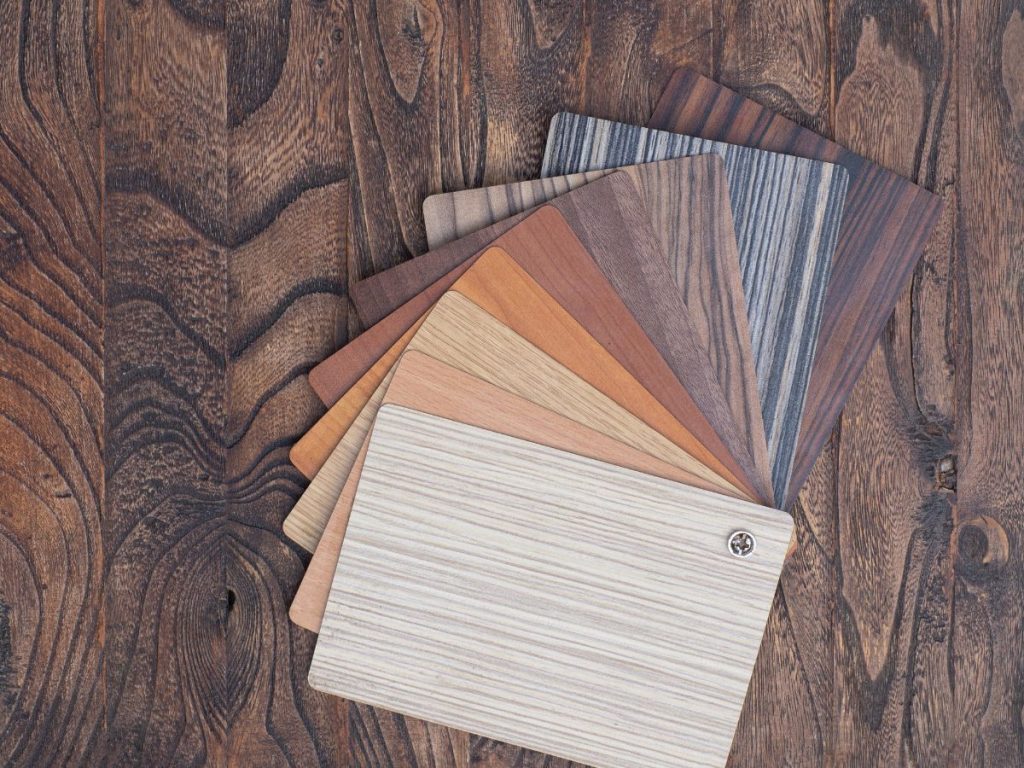Choosing the right flooring for your home is important as it can make or break the look and feel of a room. With so many options available in the market, it can be difficult to decide which one is right for you. Laminate and vinyl flooring are two popular options that people consider when deciding on new flooring.
Both these types of flooring have their advantages and disadvantages, making it important to understand them before making a decision. In this blog post, we delve into the basics of laminate and vinyl flooring, analyze their differences in terms of material composition, durability, water resistance, appearance, installation process, maintenance requirements, and cost analysis. We also provide recommendations for which type of flooring is best suited for different rooms in your home. Read on to decide which option would work best for you!
Understanding the Basics of Laminate and Vinyl Flooring
Laminate flooring comprises synthetic materials, including a fiberboard core and a print layer, while vinyl flooring is a resilient type made of synthetic materials. Both offer diverse style options but differ in installation; laminate is often a DIY project, whereas vinyl may require professional installation. Vinyl flooring, known for moisture resistance, suits high-moisture areas.
Defining Laminate Flooring
Laminate flooring comprises four layers, including a wear layer, design layer, print layer, and fiberboard core. The wear layer provides durability and resistance to stains and scratches, making it a popular choice for high-traffic areas. With various wood, tile, and stone designs, laminate offers natural aesthetics and high moisture resistance, making it suitable for family bathrooms and laundry rooms. Its ease of maintenance, requiring only dry methods or a wet mop, adds to its appeal, making it an ideal option for homeowners seeking durable floors.
Unraveling Vinyl Flooring
Unraveling the diversity of vinyl flooring encompasses various types, including sheet vinyl, vinyl tile, luxury vinyl tile, and luxury vinyl plank. With the appearance of hardwood floors, luxury vinyl plank flooring offers enhanced durability. Notably, its high moisture resistance makes it a perfect choice for wet areas like bathrooms and kitchens. Moreover, its resilience allows for installation over most existing floors, ultimately saving time and effort during renovations. Additionally, the comfortable and cushioned surface of vinyl flooring provides long-term convenience.
Delving into the Key Differences Between Vinyl and Laminate Flooring
Vinyl flooring is known for its material composition, featuring a solid vinyl core, top layers, and a wear layer. It offers waterproof options and is suitable for wet areas, unlike laminate flooring which does not fare well in high-moisture environments. Laminate flooring, however, is better suited for areas with less moisture and may not be suitable for wet areas. Additionally, when considering resale value, vinyl flooring is considered a better option compared to laminate flooring.
Material Composition
Vinyl flooring comprises multiple layers, including a design layer, print layer, solid vinyl core, and wear layer, providing durability against wear, stains, and scratches. In contrast, laminate flooring is mainly composed of composite wood materials, offering a natural wood look. Both options offer a diverse range of styles to cater to individual preferences, with the design layer of vinyl flooring determining its appearance and creating a realistic look of natural materials.
Durability and Longevity
With its resistance to wear, tear, and moisture, vinyl flooring is highly durable, providing long-lasting performance. Conversely, laminate flooring is also durable and resistant to scratches, making it ideal for high-traffic areas. Both options are designed to withstand heavy foot traffic, with vinyl flooring’s solid vinyl core contributing to its enduring durability. These resilient flooring materials have proven to maintain their appearance over time, offering homeowners durable floors that last for years.
Water Resistance
Vinyl flooring, particularly luxury options, provides exceptional moisture resistance, making it ideal for damp areas like bathrooms and kitchens. Its waterproof nature allows for versatile installation. On the other hand, laminate flooring, while somewhat water-resistant, may not be suitable for excessively moist spaces. The remarkable water resistance of vinyl flooring makes it a practical choice for households with kids and pets, while caution is necessary when laminate flooring is exposed to moisture, demanding dry cleaning methods.
Analyzing the Appearance – Vinyl vs. Laminate Flooring
When considering new flooring, the appearance plays a significant role in decision-making. Laminate floor options provide a wide range of natural wood, tile, and stone designs, offering a realistic aesthetic. On the other hand, vinyl flooring presents diverse style choices, such as luxury vinyl plank and tile, with a design layer that mimics natural materials like hardwood and ceramic tile. Both types cater to various style preferences, ensuring versatility in design and adding aesthetic value to different living spaces.
Visual Appeal of Laminate Flooring
Capturing the warmth and character of natural materials, laminate flooring offers a versatile array of style options, from embossed to high-gloss finishes, enhancing the visual appeal of any space. Its authentic appearance, replicating the look of wood, tile, or stone, adds a touch of elegance to residential and commercial interiors. With a variety of designs to choose from, including textured finishes, laminate flooring creates a visually appealing ambiance that complements diverse interior decor.
Aesthetic Value of Vinyl Flooring
Vinyl flooring offers a myriad of design options that mimic natural materials like hardwood, ceramic tile, and natural stone, enhancing the visual appeal of spaces. Luxury vinyl plank flooring provides an elegant appearance akin to real hardwood floors, adding sophistication to interiors. With various colors, patterns, and styles available, vinyl flooring allows for customized design choices in both residential and commercial settings. The realistic visuals and textures of vinyl flooring create an aesthetically pleasing environment, elevating the overall interior design.


Comparing Installation and Maintenance
When considering new flooring, installation and maintenance are key factors. Laminate floor is popular for DIY enthusiasts due to its ease of installation. It’s resilient wear layer provides durability and makes it suitable for high moisture areas. On the other hand, vinyl flooring, known for its waterproof options, is easy to maintain and great for family bathrooms and laundry rooms. Both flooring types offer resilient wear layers, durability, and moisture resistance, but laminate is better for DIY installation
Installation Process for Laminate
When installing laminate flooring, dry methods are employed, making it ideal for moisture-rich areas. The fiberboard core of laminate planks ensures easy installation and enhanced durability. Its design layer offers a wide array of style options, resembling natural materials like wood and stone. The floating floor installation process is suitable for radiant heat systems. Laminate flooring, known for resembling hardwood floors, is a versatile option for various rooms.
Installation Process for Vinyl
When considering new flooring, the installation process for vinyl offers a range of options suitable for different areas in the home. With moisture-resistant vinyl plank flooring and resilient vinyl tile installation, high-traffic rooms and moisture-prone areas can benefit from the durability and easy maintenance of vinyl floors. Additionally, luxury vinyl plank flooring provides the appearance of real hardwood, while sheet vinyl installation ensures hassle-free cleaning for family bathrooms. DIY enthusiasts can appreciate the ease of installing vinyl floors, making it a versatile choice for various spaces.
Maintenance Requirements for Both Types
When considering maintenance for laminate and vinyl flooring, it’s essential to note that laminate flooring offers dry mop maintenance, making it ideal for high foot traffic areas. On the other hand, vinyl flooring, with its waterproof options, provides ease of maintenance and durability, suitable for various rooms. Both flooring options offer appearance and durability, making them suitable for family living spaces and high moisture areas. The design layer of laminate flooring is a great option for rooms with long periods of time and high moisture resistance.
Cost Analysis – Vinyl Flooring vs. Laminate Flooring
When considering cost, vinyl flooring presents excellent value for moisture-prone areas like family bathrooms and laundry rooms. Conversely, laminate flooring’s low maintenance makes it ideal for high-traffic rooms. Both options mimic the appearance of natural wood and are suitable for long-term, high-traffic use. Waterproof vinyl plank flooring is perfect for family living spaces, while the high moisture resistance of laminate suits areas with heavy foot traffic, such as family rooms.
Initial Investment
When considering the initial investment, it’s essential to note that vinyl flooring, particularly luxury vinyl tile, offers exceptional durability, making it a valuable long-term option. On the other hand, laminate flooring, featuring luxury vinyl plank, provides ease of maintenance and is well-suited for family living spaces and high-moisture areas. Additionally, both options offer water resistance, with vinyl plank flooring being suitable for family bathrooms and laundry rooms, while the appearance of real hardwood in laminate flooring makes it ideal for rooms with long periods of time and high moisture resistance.
Long Term Value
When considering long-term value, vinyl flooring stands out for its appearance and durability, making it suitable for high-traffic areas. Luxury vinyl plank offers the aesthetics of natural wood and ease of maintenance, ensuring longevity in such spaces. On the other hand, laminate flooring’s waterproof options make it a great choice for family bathrooms and laundry rooms, providing easy maintenance for extended periods. Both options are resilient and durable, catering to different needs based on room usage and foot traffic.
Evaluating the Best Flooring by Room
Laminate flooring, with its moisture resistance, is ideal for high foot traffic areas like family rooms. Conversely, vinyl flooring, known for water resistance, is a low-maintenance choice for family bathrooms and laundry rooms. Both options offer durability and are suitable for high-traffic spaces, with laminate resembling hardwood floors and offering moisture resistance. Meanwhile, vinyl’s luxury vinyl tile provides enhanced durability, making it a valuable long-term investment.
Choosing the right flooring for your home depends on various factors such as your budget, personal preferences, and the specific needs of each room. Laminate flooring offers a wide range of styles and designs, making it a popular choice for many homeowners. It is also more durable and resistant to water damage compared to vinyl flooring. On the other hand, vinyl flooring is a great option for kitchens and bathrooms as it is highly water-resistant and easy to maintain. It also provides a softer and more comfortable feel underfoot. Ultimately, the decision between laminate and vinyl flooring comes down to your individual needs and priorities. Consider the unique characteristics of each type and choose the one that best suits your lifestyle and aesthetic preferences.

